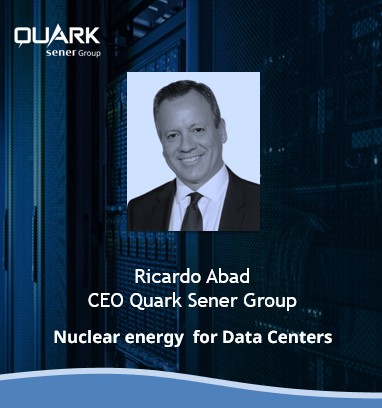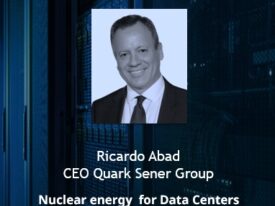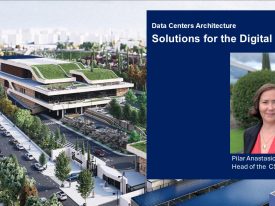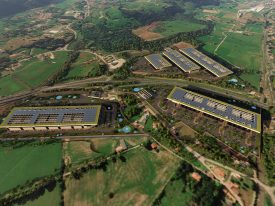By Ricardo Abad, CEO of the Sener Group
In this high-stakes environment, tech executives must rethink their energy strategies—not just for sustainability, but for resilience, cost control, and long-term competitiveness.
Enter nuclear power—specifically, Small Modular Reactors (SMRs). Once considered too slow or risky for the fast-moving tech world, nuclear is now being reimagined as a strategic asset. SMRs offer a unique value proposition: carbon-free, 24/7 baseload power in a compact, scalable format. For data centers that demand constant uptime and are under pressure to meet aggressive net-zero goals, this is a game-changing development.
Why SMRs Are Gaining Traction
Unlike traditional nuclear plants, SMRs are designed to be modular, factory-built, and easier to deploy. Their smaller size (typically under 300 MWe) allows them to be sited closer to demand centers—like data campuses—without the massive land and cooling requirements of legacy reactors. This opens the door to co-locating power generation with compute infrastructure, reducing transmission losses and increasing energy independence.
The appeal is not theoretical. Industry leaders are already making bold moves:
- Amazon Web Services (AWS) is acquiring a 960 MW nuclear-powered data center campus and investing in SMR developer X-energy. It has also signed agreements to source SMR power in Washington and Virginia.
- Microsoft is reviving the dormant Three Mile Island plant and exploring microreactors for remote or modular deployments. It has even hired nuclear experts to lead its energy strategy.
- Google has committed to a fleet of six SMRs with Kairos Power, aiming to power its operations with 24/7 carbon-free energy by 2030.
- Equinix and Switch are securing long-term nuclear capacity from startups like Oklo, betting on microreactors to power their colocation facilities.
These are not pilot projects—they are strategic bets on the future of energy.
Strategic Implications for Tech Executives
For C-level leaders, the shift toward nuclear is not just about clean energy—it’s about control, resilience, and competitive differentiation.
- Energy Sovereignty: By generating power on-site or through dedicated reactors, companies reduce dependence on volatile grids and fossil fuel markets. This is especially critical in regions like Northern Virginia, where grid congestion threatens expansion.
- Cost Predictability: While nuclear has high upfront costs, its operational expenses are stable and predictable. Long-term power purchase agreements (PPAs) or direct investments in SMRs can lock in electricity rates for decades, insulating operations from price shocks and carbon taxes.
- Sustainability Leadership: Nuclear enables credible 24/7 carbon-free energy claims—something intermittent renewables can’t guarantee. This strengthens ESG positioning and meets growing investor and customer expectations.
- First-Mover Advantage: Early adopters are shaping SMR designs, securing priority access, and influencing regulatory frameworks. They are also building internal expertise that will be hard to replicate later.
- Resilience and Uptime: SMRs offer unmatched reliability. With >90% capacity factors, they provide consistent power even during extreme weather or grid failures—critical for mission-critical workloads.
Challenges to Navigate
Of course, nuclear is not without its hurdles. Executives must approach this space with both ambition and caution.
- Regulatory Complexity: Licensing a new reactor can take years. Partnering with experienced utilities and engaging regulators early is essential.
- Public Perception: Despite advances in safety, nuclear still faces skepticism. Transparent communication and community engagement are vital.
- Technology Risk: No SMR has yet been deployed commercially. Companies must hedge their bets and avoid overcommitting to unproven designs.
- Capital Intensity: SMRs require significant upfront investment. Creative financing models—such as consortia or government-backed loans—can help mitigate risk.
A Strategic Playbook
For tech leaders considering nuclear, here’s a roadmap:
- Start with Existing Infrastructure: Explore PPAs with current nuclear plants to gain immediate access to carbon-free power. Microsoft’s deal with Constellation Energy is a prime example.
- Pilot Before You Scale: Begin with a microreactor or a partial SMR deployment to gain operational experience and validate assumptions.
- Build Internal Capability: Hire nuclear-savvy talent or partner with firms that bring regulatory and engineering expertise.
- Engage Policymakers: Advocate for streamlined SMR approvals and clean energy incentives. Your voice can shape the regulatory landscape.
- Communicate Transparently: Educate stakeholders—employees, customers, communities—on the safety and sustainability of modern nuclear technology.
- Integrate into a Hybrid Strategy: Combine nuclear with renewables and storage to create a resilient, flexible energy portfolio.
Looking Ahead
The next decade will be pivotal. If early SMR projects succeed, they could catalyze a wave of adoption, making nuclear a cornerstone of digital infrastructure. By 2030, we may see hyperscale campuses powered entirely by dedicated reactors—delivering clean, reliable energy with minimal environmental impact.
The message is clear: nuclear is no longer a fringe idea. It’s a strategic lever. Those who move early and wisely will not only secure their energy future but also shape the next era of sustainable innovation.
The question is not whether nuclear can power the data center revolution—it’s whether you’re ready to lead it.






